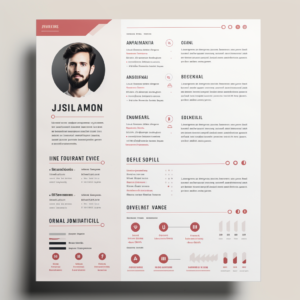In the competitive landscape of today’s corporate world, Talent Acquisition (TA) has emerged as a critical factor in building a successful workforce. This comprehensive process goes beyond mere recruitment, focusing on attracting, hiring, and retaining individuals who can significantly contribute to an organization’s growth and success.
Understanding Talent Acquisition
TA involves a strategic approach to identifying and attracting skilled professionals. It’s not just about filling vacancies; it’s about understanding the long-term needs of the business and finding individuals who align with these goals.
The Process of Talent Acquisition
- Identifying Hiring Needs: It begins with a clear understanding of the organization’s current and future needs, identifying the roles and skills necessary for success.
- Sourcing Candidates: This step involves finding potential candidates through various channels such as job postings, networking, and social media.
- Employer Branding: A strong employer brand is essential. It attracts top talent by showcasing the organization’s culture and values.
- Recruitment Marketing: This involves using marketing strategies to attract candidates, highlighting the benefits and opportunities of working with the organization.
- Engaging Candidates: The candidate experience is crucial. Positive interactions throughout the hiring process can leave a lasting impression.
- Evaluating Candidates: This stage involves assessing candidates through interviews and tests to determine their suitability for the role.
- Onboarding New Hires: Effective onboarding is key to integrating new employees into the organization, ensuring they understand their role and the company culture.

This image was generated using the Discord AI platform.
The Importance of TA
TA is vital for several reasons:
- It ensures the organization has the right people with the right skills.
- It contributes to a company’s competitive advantage.
- It impacts the overall productivity and morale of the workforce.
- It reduces turnover rates by hiring individuals who are a good fit for the company.
Modern Challenges
In today’s digital age, TA faces unique challenges:
- Adapting to Technology: The use of digital tools and platforms in recruitment requires staying updated with the latest technological advancements.
- Remote Hiring: The rise of remote work demands new strategies for sourcing and onboarding candidates from diverse locations.
- Diversity and Inclusion: Organizations are increasingly focusing on building diverse and inclusive teams, requiring a more thoughtful approach to talent acquisition.
Here’s a nice article of talent acquisition trends in 2024, by Korn Ferry.
Best Practices
To excel in TA, organizations should:
- Develop a Strong Employer Brand: This attracts top talent and sets the organization apart from competitors.
- Leverage Social Media: Platforms like LinkedIn are invaluable for sourcing and engaging with potential candidates.
- Focus on Candidate Experience: A positive experience can enhance the company’s reputation and attract more candidates.
- Use Data-Driven Approaches: Analytics can help in making informed decisions about sourcing and hiring candidates.
The Future of Talent Acquisition
The future of talent acquisition lies in embracing innovative strategies and tools. Automation, artificial intelligence, and analytics will play a significant role in streamlining the recruitment process. Additionally, a focus on candidate experience and employer branding will continue to be paramount.
Conclusion
Talent acquisition is more than just a recruitment process; it’s a strategic approach integral to an organization’s success. By effectively attracting, hiring, and retaining the right talent, companies can ensure a strong, productive, and engaged workforce. As businesses evolve, so must their talent acquisition strategies, adapting to new challenges and opportunities in the dynamic world of work.
Before starting your E-learning journey, we highly recommend to check E-learn.guide’s tips on how to find the right online course for you.












